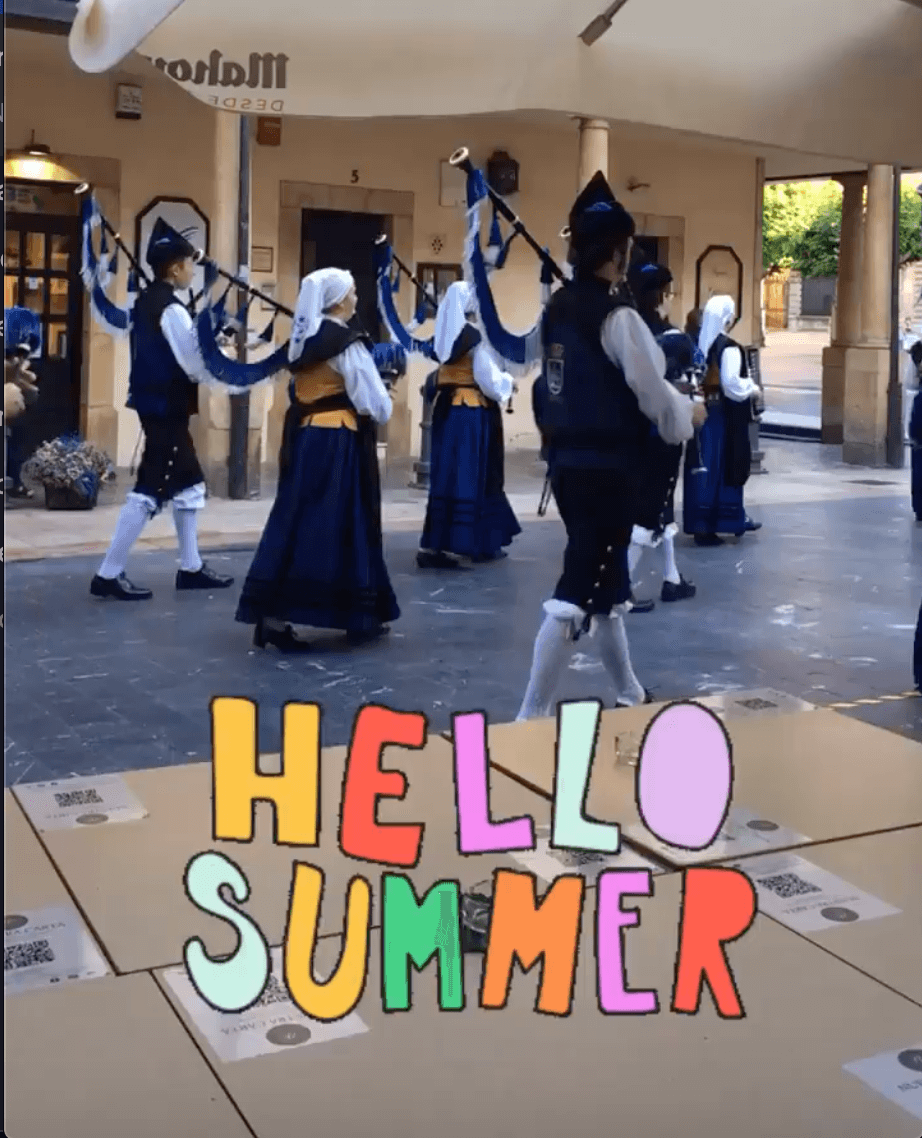Growing up in Asturias, (Spain) is likely that you own a traditional costume and have learned to dance the Danza prima at school. We see it as part of our culture, something normal. What we don’t realise that often, is that in this way we are the guardians of our intangible heritage.
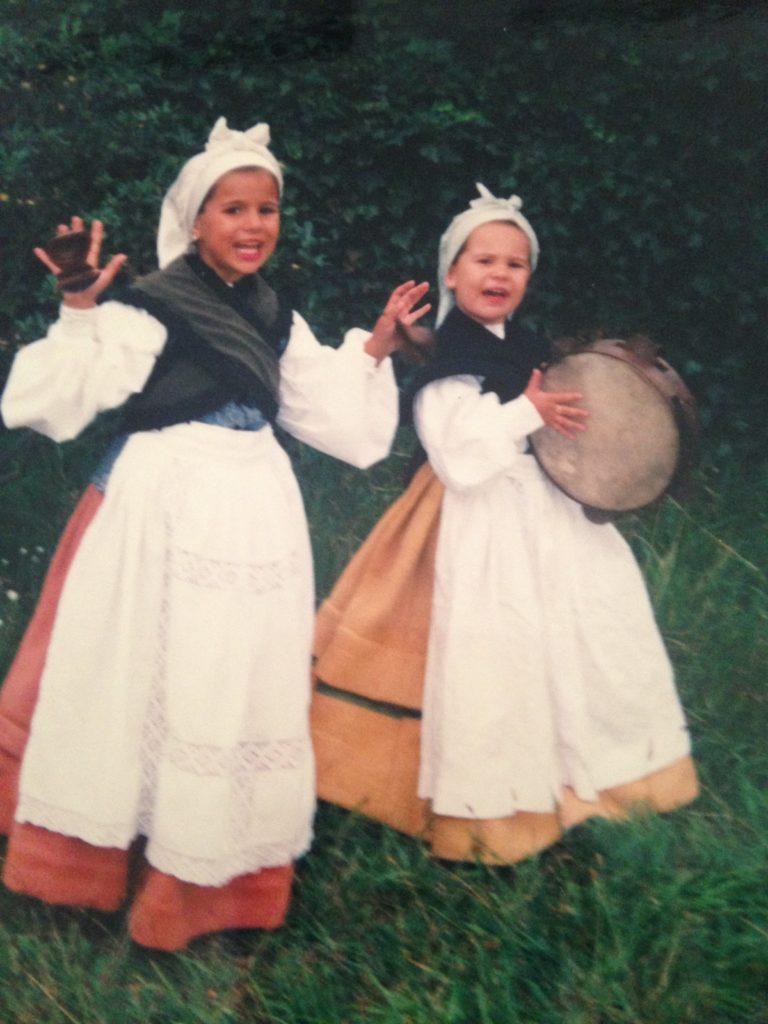
According to UNESCO “intangible heritage consists of nonphysical intellectual wealth such as folklore, customs, beliefs, traditions, knowledge and language”. This intangible heritage has been passed by generations. In the case of Asturias, part of this heritage is present in everyday life. Other traditions, like clothes, have been left aside for special occasions.
Clothes are one of the most visible representations of any intangible heritage. The traditional Asturian costume has different varieties by gender, occasion and even for regions.
With many layers, the girls finish their costume with a big skirt, an apron, a dengue or decorated piece over the chest and the hair cover by a scarf. In the case of the boys, they wear trousers to the calves with high socks, a vest, a long scarf tied on the waist and a hat called Montera picona. The traditional shoes are the madreñes, wood clogs similar to the dutch ones that allowed to walk and work on wetlands.
The colours and decoration motifs change depending on the region of Asturias. And the same happens with how the women tied their scarfs on their hair or which kind of fabric they use for them.
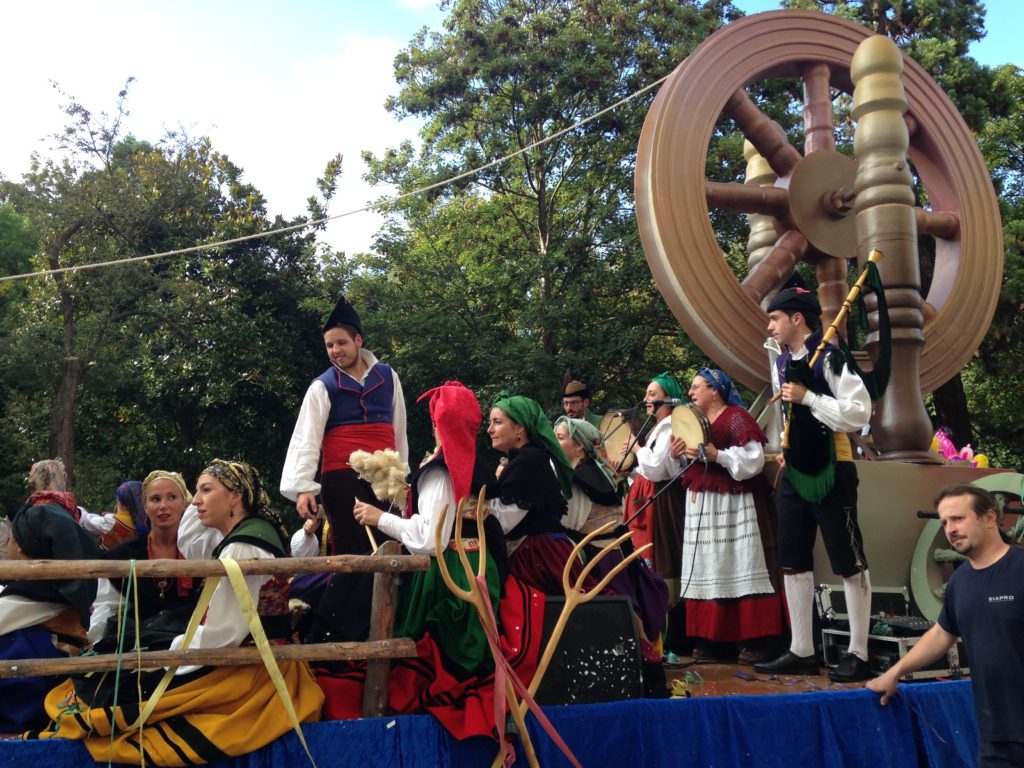
These clothes are not for every day, but many times, while a party or festivity is happening, people take their traditional costumes to the street. In some cases, wearing these costumes are even part of the celebrations.
In the town of Oviedo, for example, they celebrate a day called “Day of America in Asturias”. A day while they celebrate the emigration of Asturian people to America and their way back, mostly in the 19th century. With this migrations, many parts of the culture from the American countries travel to Asturias and that is what they celebrate with a parade. Among Brazilian people dancing or a Mexican mariachi band, there is always a car full of children in their Asturian traditional costumes.
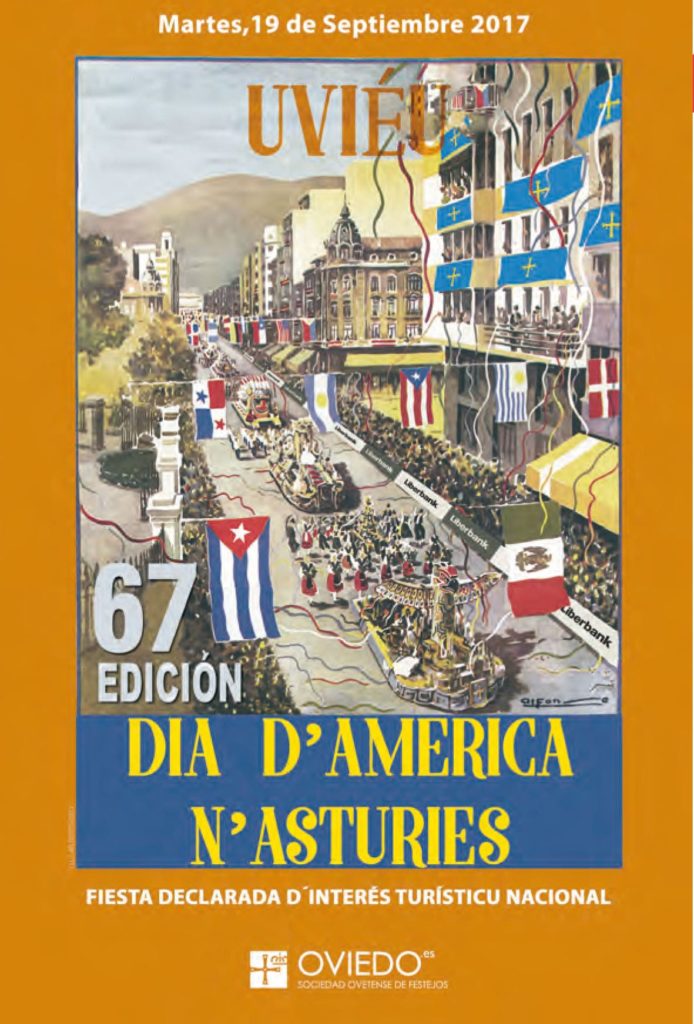
In this parade is also really important the music. Not only the American kinds of music have a place. The Asturian music is present with their drums and bagpipes.
The music and the dance are another important part of the intangible heritage in Asturias. Every festivity is accompanied by a bagpipes band. Even at many weddings, the bride and the groom are welcome as a married couple by a bagpiper and a drummer.
Traditional dances also accompanied these happy events, and many times, the parties include the dance of traditional dance or a demonstration made by some dance group.
But in festivities, and mostly in Spain, music and clothes are not alone. Food and drinks are two really important elements of these events. And Asturias has some traditions within this area that are worthy to mention.
Asturias culinary traditions are wide and include many elements. Nice meats from the mountains, fish and seafood from its shores, a lot of vegetables, many types of cheeses… But not all of them are suitable to eat while enjoying a party. But two main recipes show up on every festive occasion. One of them, more simple is called bollu preñau, consists of a loaf of bread with chorizo inside. This recipe has suffered modifications and now it can be found with many ingredients inside instead of chorizo. The other recipe is called tortos, they are a corn flatbread fried that is normally served with picadillo spiced meat made mainly with pork and paprika but that can be accompanied of anything that the consumer could think of like cheese, vegetables, ham….
As well as eating, drinking is important. In this region there are a lot of apples, so one of the traditional drinks is cider. This drink is common to other places but the Asturian is characterised for not having bubbles and mainly for the way it is consumed. From a bottle similar to the wine one the cider is poured into the glass with a big space between both of them. The glass is only filled for a shot and it is shared by all the people sharing the bottle. This is a popular drink in the region not only in festivities. so, it is also present in all the festivities. There is even a non-alcoholic version, sweeter, that is drink in the party celebrated to welcome the autumn.
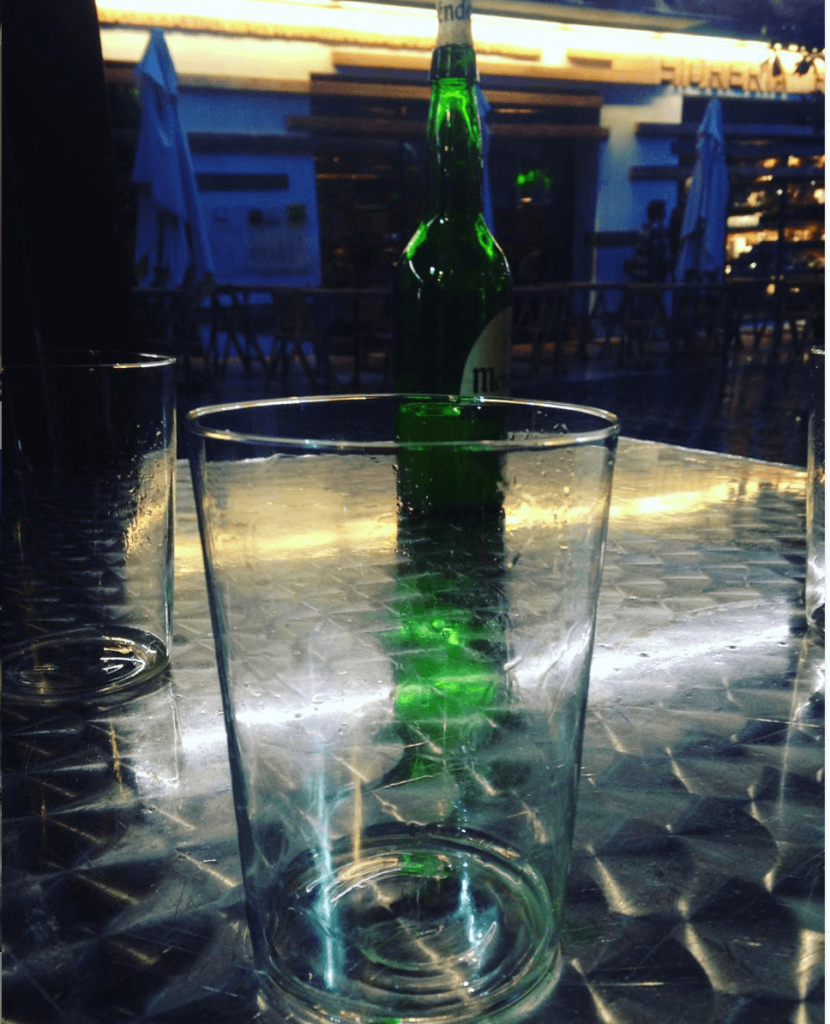
While some part of the intangible heritage has found an easy place in the festive life of the region, other tries to find its way back to the popular knowledge. Many times joining more modern trends. For example, why not use creatures from the myths of the region as a photo wall? In this case a Xana or fountain fairy and a Trasgu or domestic mischievous elf.
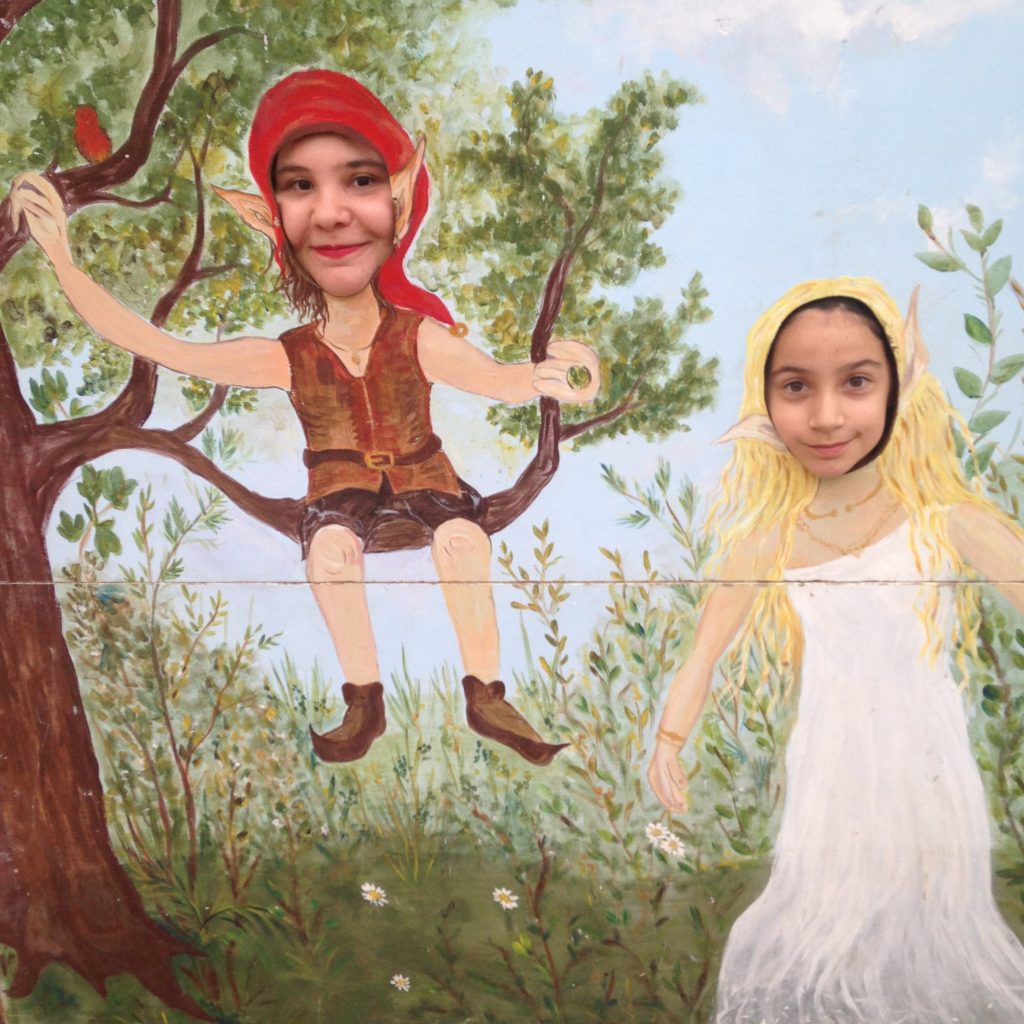
People posing in a photo wall decorated with creatures from Asturian myths 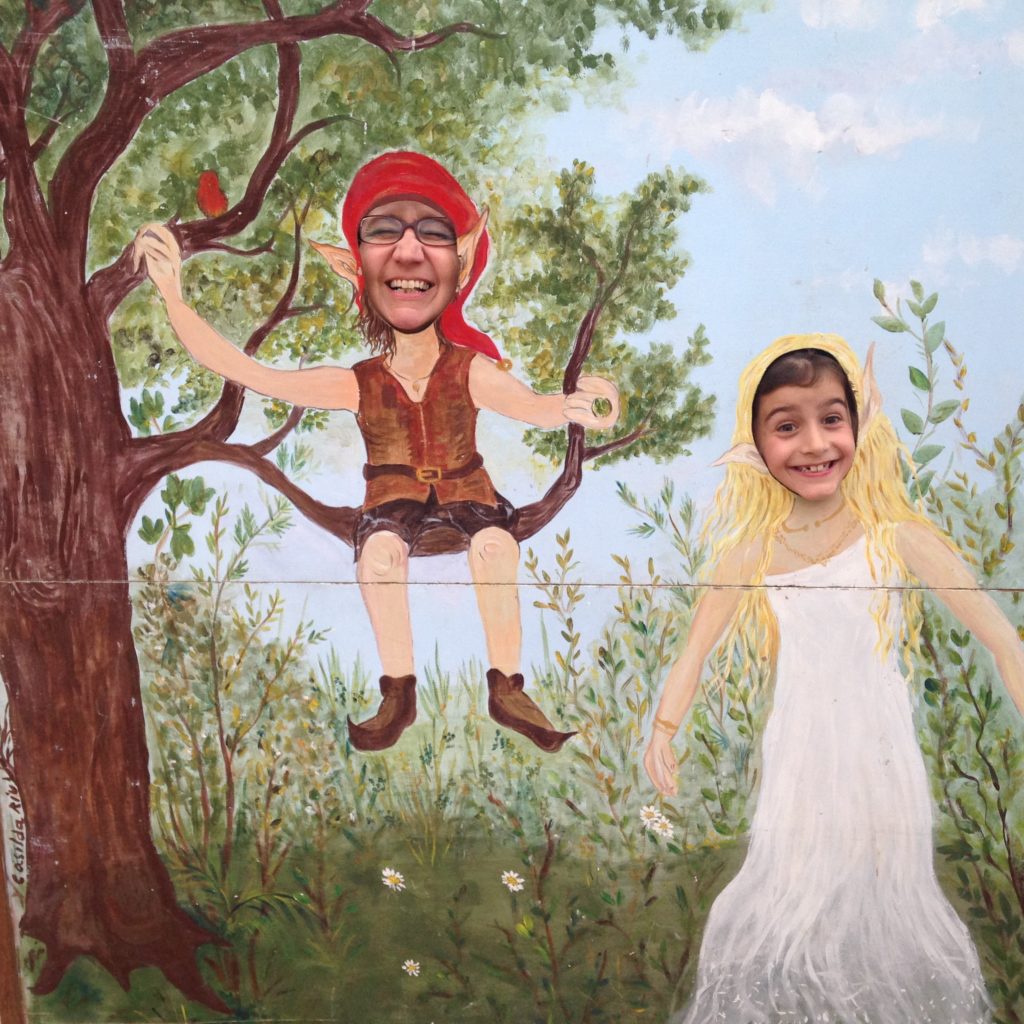
People posing in a photo wall decorated with creatures from Asturian myths
